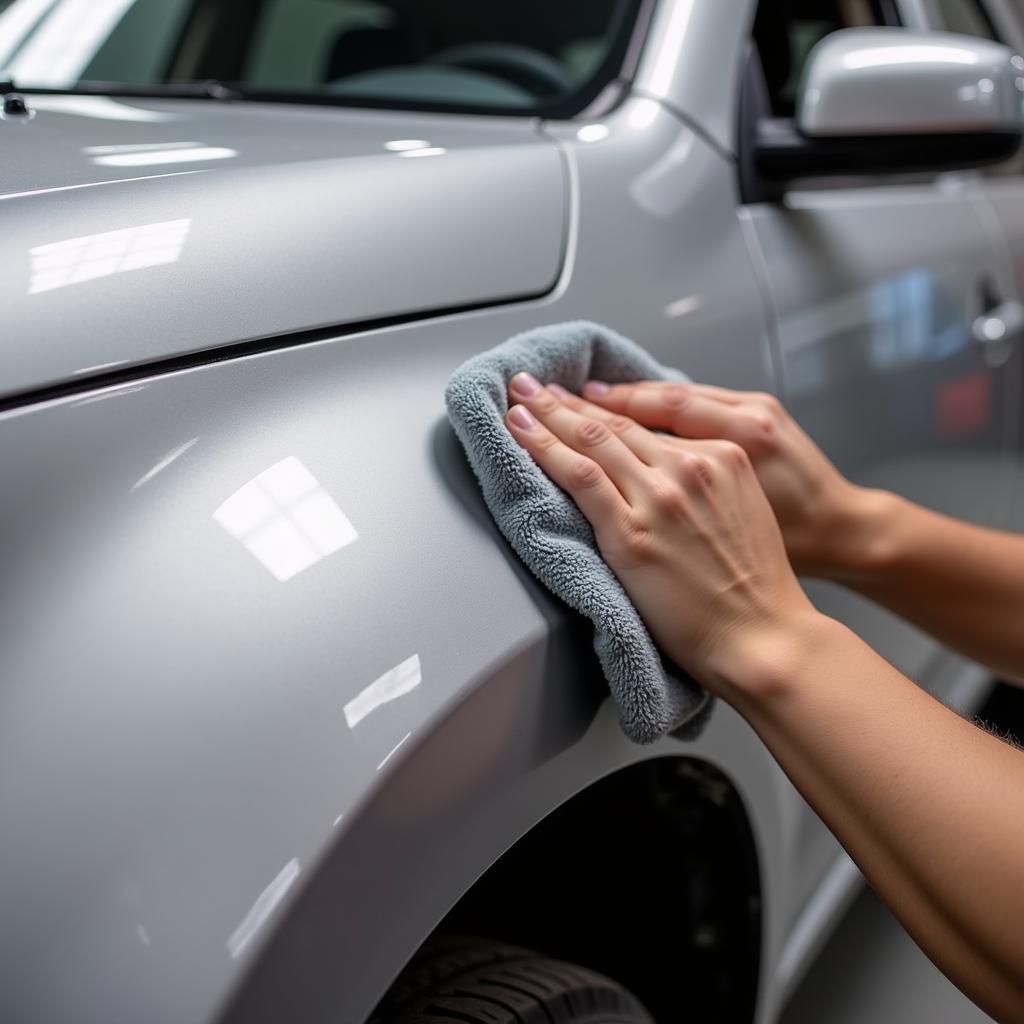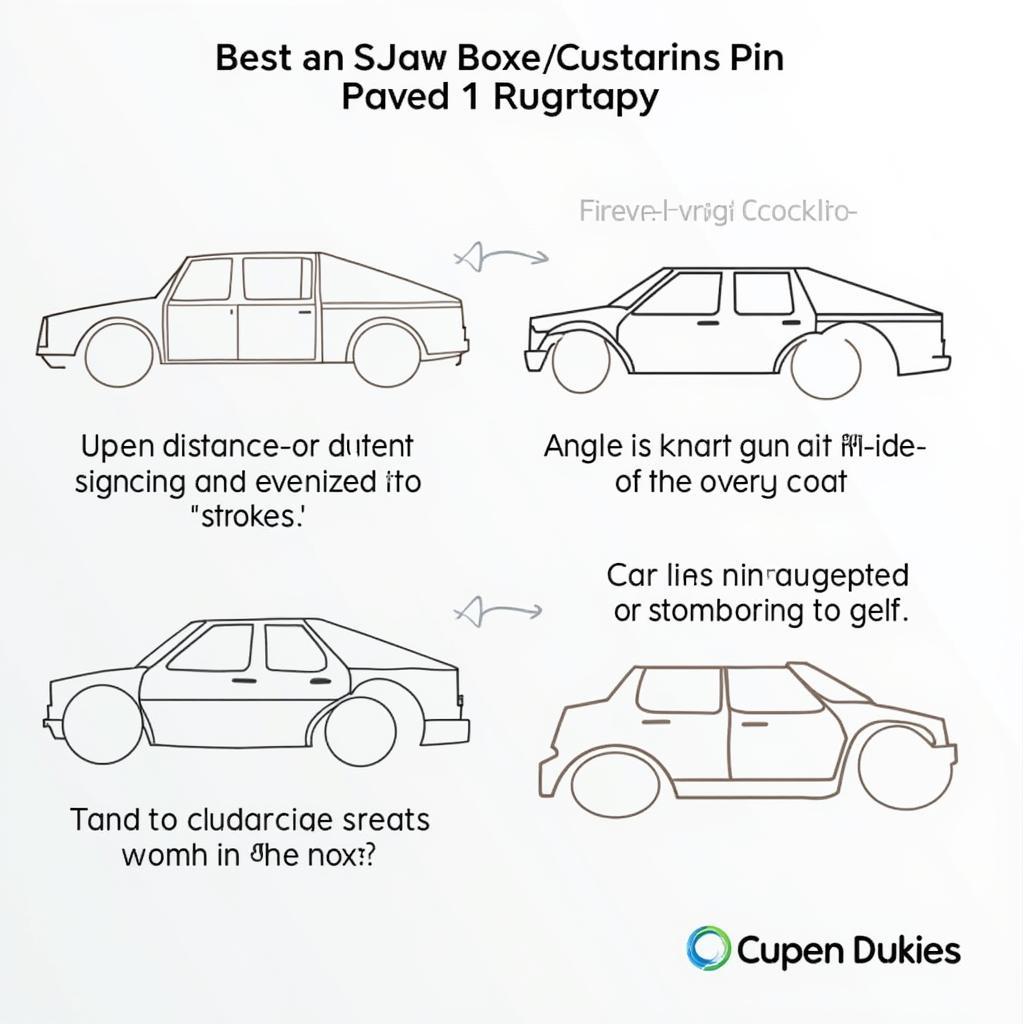Fixing paint runs on your car can seem daunting, but with a little patience and the right techniques, you can achieve professional-looking results. Whether you’re a seasoned DIYer or a complete novice, this guide will walk you through the steps to tackle those unsightly drips and restore your car’s finish.
Understanding Paint Runs and Their Causes
Paint runs occur when excess wet paint flows down a vertical surface, creating a raised, uneven area. Several factors can contribute to paint runs, including applying too much paint in a single coat, using thinners that are too aggressive, or painting in unsuitable weather conditions like high humidity or low temperatures. Even the angle at which you hold the spray gun can play a role. Identifying the cause is the first step to preventing future runs.
Materials You’ll Need
Before you begin, gather the following materials:
- Sandpaper (various grits, starting with 1500 and progressing to 2000 or 2500)
- Sanding block
- Rubbing compound
- Polishing compound
- Wax or sealant
- Clean microfiber cloths
- Masking tape (optional)
- Tack cloth
Step-by-Step Guide to Fixing Paint Runs
- Preparation: Thoroughly wash and dry the affected area. If necessary, use masking tape to protect the surrounding paint.
- Initial Sanding: Start with 1500-grit sandpaper and a sanding block. Sand the run lightly, using back-and-forth motions. The goal is to level the run without damaging the surrounding paint. Frequently check your progress.
- Progressing Through Grits: Gradually move to finer grits of sandpaper (2000, then 2500), sanding in between each grit change. This process smooths out the scratches created by the coarser sandpaper.
- Rubbing Compound: Apply a small amount of rubbing compound to a clean microfiber cloth and work it into the sanded area using circular motions. This step removes any remaining scratches and restores the gloss.
- Polishing Compound: Follow the rubbing compound with a polishing compound, using the same technique. This further refines the finish and adds shine.
 Polishing a car panel after sanding a paint run
Polishing a car panel after sanding a paint run
- Waxing/Sealing: Apply a layer of wax or sealant to protect the repaired area and enhance the gloss.
- Final Inspection: Carefully inspect the area in good lighting to ensure all runs have been removed and the finish is smooth and even.
Preventing Future Paint Runs
- Apply Thin Coats: Multiple thin coats are always better than one thick coat. Allow each coat to dry completely before applying the next.
- Proper Thinning: Follow the paint manufacturer’s recommendations for thinning ratios.
- Ideal Conditions: Paint in a well-ventilated area with moderate temperature and humidity.
- Gun Technique: Hold the spray gun at the correct distance and angle, and maintain a consistent speed.
 Correct spray painting technique to prevent paint runs
Correct spray painting technique to prevent paint runs
Tips from the Experts
“One common mistake is sanding too aggressively,” says John Miller, a seasoned auto body technician with over 20 years of experience. “Patience is key. It’s better to remove the run slowly and methodically than to risk damaging the surrounding clear coat.”
Another expert, Maria Sanchez, an automotive paint specialist, adds, “Always test your paint and thinner mixture on a scrap piece of metal before applying it to your car. This helps ensure the consistency is correct and prevents unwanted surprises.”
Conclusion
Fixing paint runs on your car requires patience and attention to detail, but the results are well worth the effort. By following these steps and utilizing the expert tips, you can restore your car’s finish to its former glory. If you need further assistance or have any questions, please don’t hesitate to connect with us at AutoTipPro. You can reach us at +1 (641) 206-8880 or visit our office at 500 N St Mary’s St, San Antonio, TX 78205, United States.
FAQ
- Can I fix paint runs myself? Yes, with the right tools and patience, fixing minor paint runs is a DIY-friendly project.
- What grit sandpaper should I start with for paint runs? Begin with 1500-grit sandpaper and gradually move to finer grits.
- How do I prevent paint runs in the future? Apply thin coats, use the correct thinner ratio, and paint in ideal conditions.
- What if I sand through the clear coat? If you sand through the clear coat, you’ll need to repaint the area.
- Can I use a power sander to fix paint runs? While possible, a power sander can easily damage the paint. Hand sanding is recommended for better control.
- What is the difference between rubbing compound and polishing compound? Rubbing compound removes scratches, while polishing compound refines the finish and adds shine.
- How long should I wait between coats of paint? Follow the paint manufacturer’s instructions for drying times.






Leave a Reply